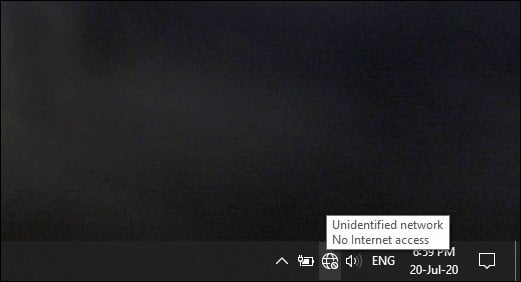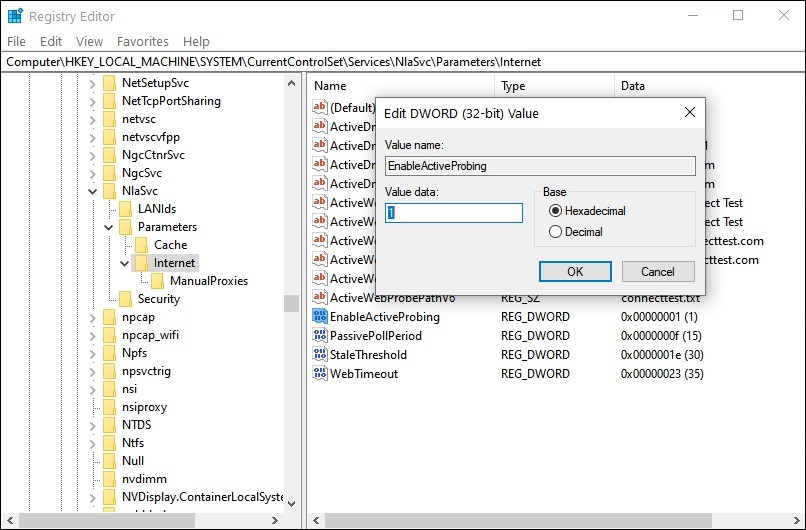KEEP IN TOUCH
Subscribe to our mailing list to get free tips on Data Protection and Cybersecurity updates weekly!







Microsoft is investigating a known issue where Windows 10 2004 customers might see “No Internet access” tray indicators even though their devices are connected to the Internet.
“Customers are reporting ‘no internet’ access in the Network Connectivity Status Indicator (NCSI) on Windows 10 2004 devices on devices that in fact can ping internet resources or browse web sites with internet browsers,” a post on Microsoft’s TechNet forum describes the issue.
Windows 10 users have also reported experiencing this issue after upgrading to 2004, with system reboots, router resets, and driver updates not fixing the problem. (1, 2, 3, 4, 5, 6)
The company is currently investigating this Windows 10 2004 bug, with a fix to be delivered to affected devices with a future cumulative update.
While the Windows taskbar tray icon saying “No Internet access” on devices with a working Internet connection should only be a minor annoyance, users might encounter “Please connect your device to the internet” whenever launching apps that rely on Windows APIs to detect Internet connection status.

The issue seems to be connected to a bug that prevents the Network Connectivity Status Indicator (NCSI) to correctly determine if an impacted Windows 10 is connected to the Internet and according to Microsoft’s own support site and user reports it has affected multiple Windows versions for years (1, 2, 3, 4).
In Windows 10, NCSI periodically connects to the http://www.msftconnecttest.com/connecttest.txt site to check if the returned content is the string ‘Microsoft Connect Test’.
If the returned string is the one it expects, NCSI will tell the OS to display a “Connected,” or display a “No Internet access” message if it isn’t.
Even though Microsoft doesn’t provide an official fix for this known issue, one way to make sure that Microsoft’s Network Connectivity Status Indicator (NCSI) properly detects internet access is to enable NCSI Active Probing using the Registry Editor according to multiple user reports.
To do that you will have to go through the following procedure:
1. Open Registry Editor
2. Go to HKEY_LOCAL_MACHINE\SYSTEM\CurrentControlSet\Services\NlaSvc\Parameters\Internet
3. Modify the EnableActiveProbing registry key’s value data from “0” to “1”
4. Restart the computer

Also read: How Being Data Protection Trained Can Help With Job Retention
Microsoft is also investigating another similar issue where devices running Windows 10 versions 1903 and 1909 or Windows Server 1903 and 1909 might be unable to access the Internet when using some wireless wide area network (WWAN) LTE modems.
“After installing KB4535996 on a Windows 10 device with a wireless wide area network (WWAN) LTE modems, you might be unable to reach the internet even though the Network Connectivity Status Indicator (NCSI) in the notification area shows as connected to the internet,” Microsoft explains.
Microsoft says that they are working on a resolution for this issue with a solution to be provided during mid-July.
In the KB4554364 out-of-band Windows 10 update published in March, Redmond addressed another internet connectivity issue affecting devices with proxies, including virtual private networks (VPNs).
As described by the company at the time, the bug affected all supported Windows 10 and Windows Servers versions and it was causing apps like Microsoft Teams, Microsoft Office, Office 365, and Outlook to not be able to connect to the Internet if the user was using a VPN.
Also read: Privacy policy template important tips for your business